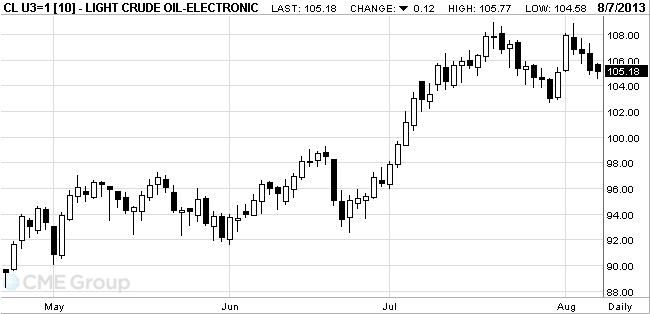- Oil dropped for a fourth day
Notícias do Mercado
Oil dropped for a fourth day
West Texas
Intermediate crude dropped for a fourth day after a government report showed
inventories of gasoline and distillate fuels unexpectedly increased.
Futures
fell as much as 0.7 percent. The Energy Information Administration said
gasoline inventories rose 135,000 barrels to 223.6 million last week. Stockpiles
were forecast to decrease 500,000 barrels, according to the median of 11
analyst estimates in a Bloomberg survey. Distillate supplies, which include
diesel and heating oil, gained 469,000 barrels to 126.5 million. They were
estimated to remain unchanged from the prior week, the survey showed.
Inventories
of crude oil fell 1.32 million barrels to 363.3 million, the department said. Supplies
were forecast to slide 1.5 million barrels. They surged to 397.6 million on May
24, the most since 1931, according to the EIA, the Energy Department’s
statistical unit.
Crude
production rose 0.2 percent to 7.56 million barrels a day last week, the
highest level since December 1989, the EIA said. Output has surged as the
combination of horizontal drilling and hydraulic fracturing, or fracking, has
unlocked supplies trapped in shale formations in the central part of the
country.
WTI crude
for September delivery fell 28 cents, or 0.3 percent, to $105.02 a barrel at
10:48 a.m. on the New York Mercantile Exchange. The contract traded at $105.43
before the release of the EIA report at 10:30 a.m. in
Brent oil
for September settlement dropped 60 cents, or 0.6 percent, to $107.58 a barrel
on the ICE Futures Europe exchange. Volume was 18 percent above the 100-day
average. The European benchmark grade traded at a $2.56 premium to WTI, down
from $2.88 yesterday.
